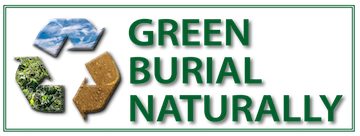Digging a burial grave at Eloise Woods Community Natural Burial Park. photo by Tom Bailey
When life throws out odd opportunities I find it's best to take them.
During a recent visit to Austin, Texas, I told Ellen Macdonald I wanted to visit Eloise Woods Community Natural Burial Park, her green burial ground.
"Do you want to help bury a baby?"
That threw me. "You're having a funeral?"
"Well, not exactly. It's a 20-week-old miscarriage. The family want the remains buried but won't be there themselves."
"Sure," I said uncertainly.
"Good. I'll let you know when I'm going out."
Digging in the earth is a very elemental activity. Soil has consistency; it's dry or wet, clotted or fine, red, light, sandy. It gets under your fingernails, stains palm lines. Potato bugs, worms, beetles, millipedes, live in the top layer along with microbes you can't see. It has odor. When I was a child I dug in it to bury a dead robin and a dead cat, also to help my mother plant her garden. But I haven't worked it much as an adult.
So next morning after Austin rush hour traffic had calmed down but before the heat rose Tom and I headed south of the city and east into farming country, midway between the Austin airport and Bastrop. We visited Eloise Woods almost three years ago and knew Ellen, the burial park's owner and "queen." I'd only just met the woman who would bring the remains. Melissa Unfred is an independent funeral director known as The Modern Mortician.
We arrived first and were walking Ellen's paths when they arrived with Melissa holding a rectangular tupperware type plastic box. We retreated into the shed where Ellen keeps shovels and shrouds. Melissa set the box reverently down. Did I want to see it?
I swallowed and said, yes. In for a penny in for a pound. Muttering about the excess plastic that the hospital used, they unwrapped a tiny form that looked shrivelled because the fluid that made up most of it in the womb was gone. Melissa held up a cheerful flannel bag. Once the remains were enfolded in the shroud and the paperwork was filled out Melissa's work was done.
She left us to collect another body at the hospital. Ellen gathered the flannel. "How much digging do you want to do? There's a grave I dug for a small pet that we could use, but I figure for your education you want the digging."
When I nodded she selected a short-handled pick axe for me.
The site she picked was near a stone bench marking the area called Angel Garden because it's where she buries babies. Ellen donates her time and land to people like the present parents, who would probably never come see the spot. Ellen set the flannel next to the base of a tree marked by small stones.
"Here," she pointed.
I hefted the pick, considered the space, moved the flannel out of the way of a flailing tool, and swung it. Crunch. Ellen's soil is gravel-sandy-loam; diggable in small sections like this but full body adult graves must be opened with a backhoe. I lifted the pick and swung again.
"You'll kill your back. I usually just scrape around and pull the dirt away."
I looked at her gratefully, wondering why she hadn't chosen a shovel for me. Perhaps this was her usual tool.
When the hole was deep enough Ellen placed the flannel in the grave, scattered flower petals across and I pulled dirt over, patted the mound, smoothed it. Ellen would bring soil from elsewhere later to increase the top cover to provide a good smell barrier against animals. She marked it with a stone she'd engraved.
"I don't know if they believe in angels," she said as she corkscrewed the stone into the earth.
There was no life to mourn for with this baby, it was an uncomplicated burial. Had it been an adult, even a stranger, there would have been more emotion for me. I felt pretty good about the job.
We make a big deal of going back to the soil in natural burial, and the way to get there is to dig a hole, put in human remains, and refill. Which is just what I did. Think of how invasive a big noisy machine is for such a personal job. People may open and close the grave when a loved one dies, but most don't. I didn't with my father. Working with the soil at Eloise Woods was satisfying in a way that symbolic throwing shovelfulls of dirt on his grave wasn't. Maybe doing away with the shovel at a natural burial so people have to scoop dirt and pour it out with their hands would allow a better connection with recycling the body back into the earth even if most of the digging is done by cemetery personnel.
After Ellen had settled the stone we retreated to her shed for water and shelter from the sun. Later she would link a name to the surveyed plot and add it to her cemetery map so a visitor would know who was there.
It won't take long for the earth to take back this tiny form, and that's the point. Dust to dust. Life to life.











